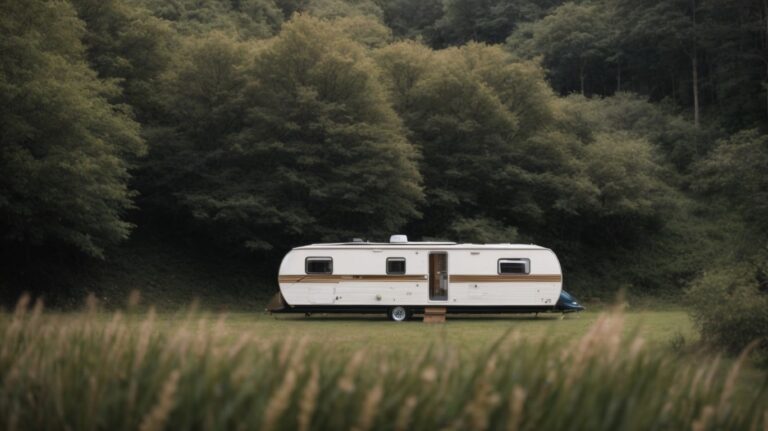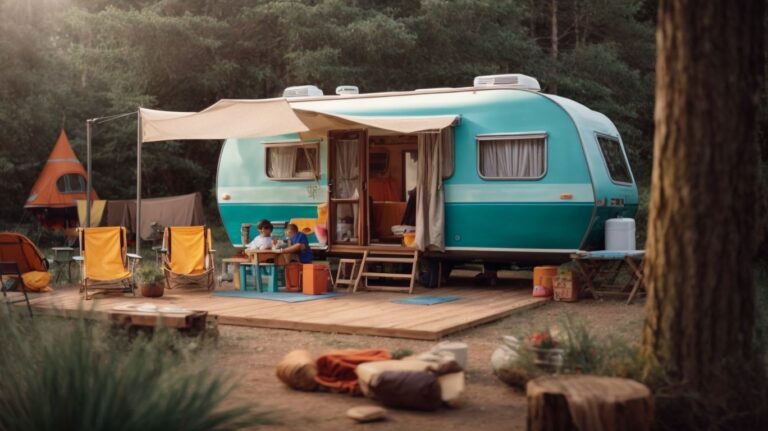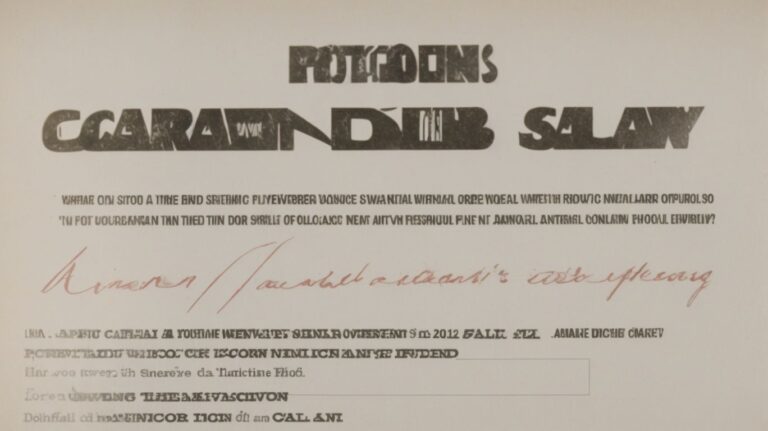Across the Sahara: The Speed of Trade Caravans Through the Sands of Time
The Sahara Desert has long been a crucial hub for trade, with caravans crossing its vast sands to transport goods and culture.
From the history of trade caravans to the essential supplies and animals used for transportation, this article delves into the fascinating world of trade across the Sahara.
Explore the main trade routes, the speed at which caravans traveled, and the impact they had on the economy and culture of the region.
Join us as we journey through the sands of time to explore the rich history of trade caravans in the Sahara Desert.
Key Takeaways:
– Trade caravans played a crucial role in the economic and cultural development of the Sahara, connecting distant regions and facilitating the exchange of goods and ideas.
The Sahara Desert and Its Importance in Trade
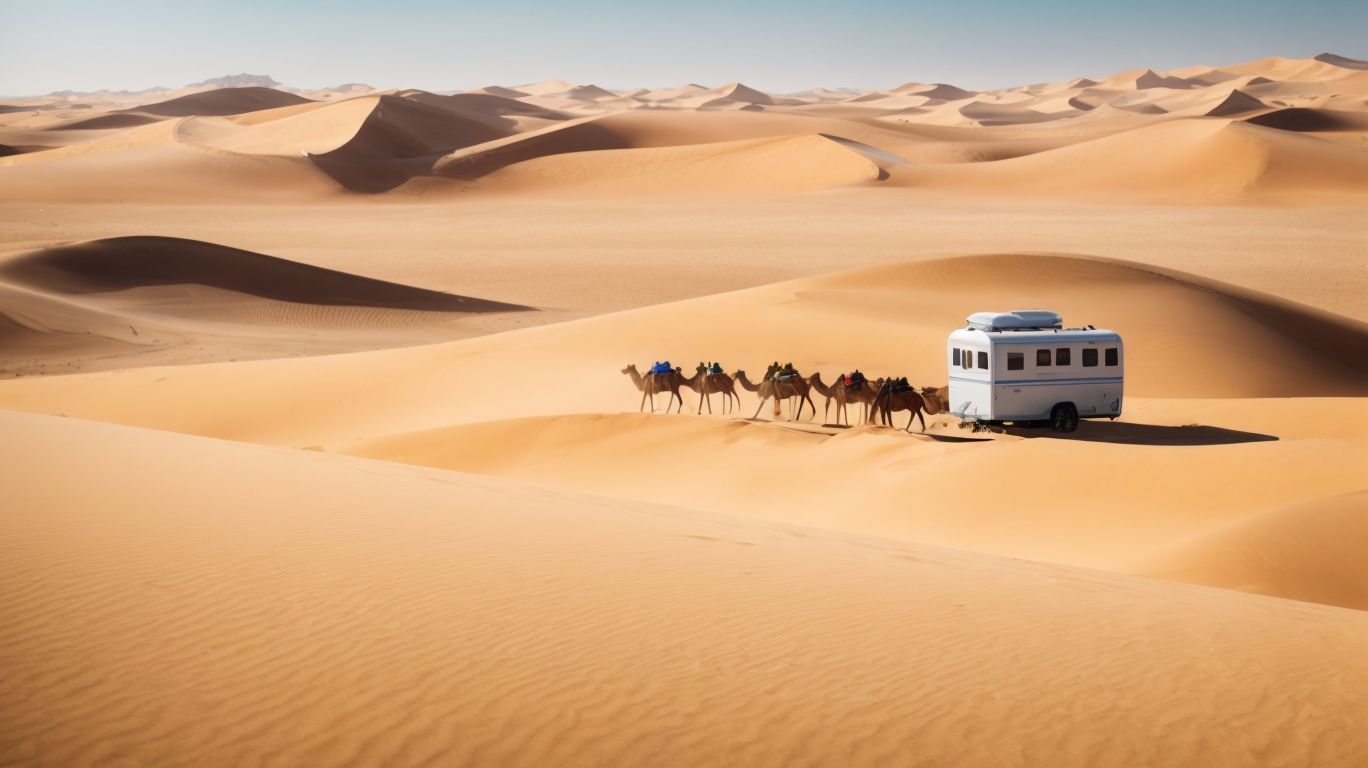
Credits: Motorcaravanning.Com – George Hernandez
The Sahara Desert, located in North Africa, has played a pivotal role in shaping trade routes and cultural exchanges between North and West Africa, leaving a lasting trade legacy.
The History of Trade Caravans Through the Sahara
The history of trade caravans through the Sahara is rich with tales of trans-Saharan trade, camel caravans, and the economic and cultural exchanges that shaped empires like Ghana, Mali, and Songhai through the trade of goods such as slaves, ivory, and gold.
These trade routes not only facilitated the exchange of valuable commodities but were also instrumental in spreading Islamic beliefs and practices across the region. The trans-Saharan trade caravans served as conduits for the dissemination of Islamic knowledge, leading to the conversion of many individuals along the way.
The rise of Islam in West Africa, partly fueled by these trade connections, had a profound impact on the social fabric and political landscape of the region. The influx of Arab merchants and scholars brought not only new religious ideas but also advancements in various fields such as architecture, science, and governance.
The Equipment and Preparation of Trade Caravans
The equipment and preparation of trade caravans involved essential elements like camel caravans, navigation through oases, guidance by Berbers, sourcing from salt mines, and the expertise of desert pathfinders and Tamashek people, all reflecting the rich Sahara culture and geography.
Camel caravans were meticulously organized, with each camel serving not only as a mode of transport but also as a vital resource in the harsh desert environment, carrying provisions and goods essential for survival. Navigating through oases required intricate knowledge of desert trails and water sources, ensuring the caravan’s safe passage and resupplying of supplies. The Berbers, with their deep-rooted understanding of the desert terrain, played a pivotal role in guiding caravans, interpreting the shifting sands, and leading the way through treacherous routes.
Trade caravans sourced valuable commodities like salt from remote mines, necessitating careful planning and coordination to ensure a steady supply chain. The expertise of desert pathfinders and the Tamashek people in negotiating perilous sand dunes and rocky terrains was essential for successful caravan journeys. These skilled individuals were adept at reading the subtle signs of the desert, navigating by the stars, and utilizing traditional methods to survive and thrive in the challenging Sahara environment.
What Animals Were Used for Transportation?
Camel caravans were the primary mode of transportation for Sahara trade, with Arabian camels being bred specifically for long journeys across the desert.
These remarkable creatures played a vital role in connecting distant regions through the vast expanse of the Sahara desert, allowing for the exchange of goods, ideas, and cultures. Camel breeding practices focused on developing resilient animals capable of enduring the harsh conditions of long journeys, making them well-suited for the demands of desert travel. The adaptability and endurance of Arabian camels made them essential companions for merchants navigating the challenging terrain, ensuring the success and efficiency of trade routes that spanned the desert landscape.
What Supplies Were Essential for Survival?
Trade caravans crossing the Sahara Desert required essential supplies such as provisions for salt-hauling, a vital commodity in the thriving salt market of the region.
Along with salt provisions, water was the most crucial resource for survival in the unforgiving desert terrain. Caravans had to ensure an adequate supply of water for both humans and livestock, often relying on skilled water carriers to locate and transport this precious resource.
Protection against the scorching sun and sandstorms was essential, prompting traders to carry sturdy tents, light clothing, and headgear to shield themselves from the harsh elements.
Food supplies like dried fruits, nuts, and grains sustained the caravan members during long journeys, providing essential nutrients and energy. Tools for repairing equipment and navigating the vast desert expanse were fundamental for the caravan’s success, highlighting the importance of preparation and foresight in such challenging trade ventures.
How Were Trade Caravans Organized?
Trade caravans traversing the Sahara were meticulously organized, with skilled trackers, experienced Berber traders, and a legacy of ancient caravans navigating the vast desert landscapes to facilitate oasis trade and historic trade routes.
Trackers played a crucial role in these caravans, utilizing their knowledge of the desert’s terrain and weather patterns to guide the group safely through the sands. Berber traders, known for their expertise in negotiating trade deals and navigating the bustling markets of oasis towns, were essential for the success of these journeys.
The historical significance of these caravans extended beyond mere commerce, as they facilitated cultural exchange, the spread of ideas, and even the transmission of knowledge across regions.
The trade routes that crisscrossed the Sahara left a lasting legacy, shaping the development of societies and economies in the region for centuries.
The Routes and Speed of Trade Caravans
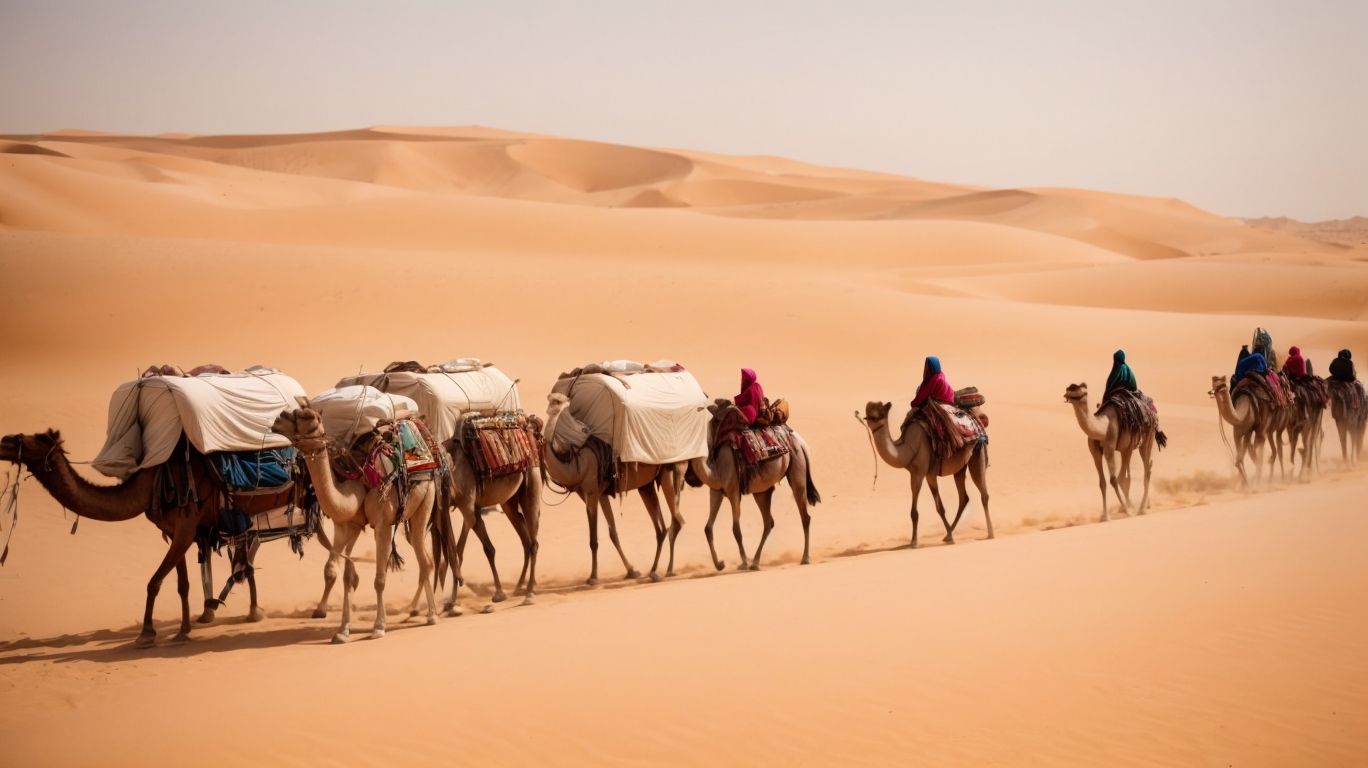
Credits: Motorcaravanning.Com – Roger Campbell
The routes and speed of trade caravans in the Sahara were influenced by geographical features, historical trade patterns, and the eventual decline of trade routes due to the establishment of European trading bases.
One of the key geographical factors impacting the trade routes across the Sahara was the vast expanse of desert terrain, presenting challenges such as extreme temperatures, scarce water sources, and shifting sands that affected travel speed and the choice of paths.
Historical trade patterns also played a crucial role, with the rise and fall of empires shaping the flow of goods and the routes taken by caravans. The development of more efficient maritime trading routes by European powers further accelerated the decline of traditional overland commerce in the region. Learn more about the speed of trade caravans across the Sahara.
As these factors intertwined, the once-thriving caravan trade in the Sahara gradually gave way to alternative trade routes, marking a significant shift in the region’s economic landscape.
What Were the Main Trade Routes Through the Sahara?
The main trade routes through the Sahara connected Mediterranean ports to the Islamic world, facilitating the exchange of goods such as salt and other valuable trade commodities.
These routes were vital for the economic development of both regions, with salt being a particularly prized commodity due to its necessity for food preservation and its scarcity in certain areas.
Caravans laden with salt would traverse the vast desert expanse, braving harsh conditions and dangers to bring this precious mineral to markets in the Islamic world.
Alongside salt, goods like gold, ivory, textiles, and spices also flowed through these trade networks, enriching the cultures and economies of all involved parties.
How Long Did It Take for Trade Caravans to Cross the Sahara?
The journey for trade caravans to cross the Sahara, such as those heading to Timbuktu, varied in duration due to factors like exploration routes and the necessity of sourcing salt from mining operations along the way.
Traveling through the vast sands and arid landscapes of the Sahara meant caravans had to carefully plan their trip, often taking several weeks or even months to reach their destinations. The exact time taken depended on the specific starting point, the chosen pathways, and external conditions like weather and encounters with other nomadic tribes.
For routes leading to Timbuktu, which was a major trading hub known for its economic significance, caravan leaders had to factor in stops for rest, water replenishment, and of course, the critical procurement of salt from the highly valued salt mines scattered across the desert. Learn more about the speed of trade caravans through the Sahara here.
What Factors Affected the Speed of Trade Caravans?
The speed of trade caravans in the Sahara was influenced by factors such as the practices of Berber culture, interactions with sub-Saharan Africa, and the historical trade dynamics that shaped travel efficiency.
One of the key elements affecting caravan speed in the Sahara was the deep-rooted traditions of the Berber people, known for their expertise in navigating the harsh desert terrain and maintaining crucial supply networks. These cultural practices, passed down through generations, played a significant role in sustaining the logistics of caravan trade routes.
The interactions with sub-Saharan Africa introduced diverse goods and trade opportunities, contributing to the overall complexity of caravan operations. This cross-cultural exchange added layers of intricacy to the already challenging journey across the vast Sahara desert.
The historical context of trade relationships further added nuances to caravan speed, as shifting alliances and economic factors influenced the flow of goods and resources. Understanding these historical dynamics is essential to grasping the intricacies of trade activities within the Sahara region.”
The Impact of Trade Caravans on the Economy and Culture of the Sahara

Credits: Motorcaravanning.Com – Nathan Brown
Trade caravans had a profound impact on the economy and culture of the Sahara, transforming trade centers, facilitating the gold trade, attracting European traders, and even influencing cultural exchanges that led to spiritual growth.
These caravans formed the lifeline of the Sahara region, connecting diverse civilizations and fostering a vibrant marketplace where goods, ideas, and beliefs converged. The gold trade, in particular, flourished, with merchants traversing vast desert expanses to exchange this coveted commodity. European traders, drawn by the allure of these riches, established trade routes that further integrated the Sahara into the global economy. Learn more about the speed of trade caravans through the sands of time
The cultural exchanges that occurred along these trade routes were instrumental in shaping the spiritual landscape of the region. Beliefs, practices, and traditions intermingled, giving rise to new syncretic faiths and fostering a climate of tolerance and understanding among different communities.
What Goods Were Traded Along the Caravan Routes?
Along the caravan routes of the Sahara, goods such as ivory, slaves, and various trade commodities were exchanged, reflecting the diverse economic activities and trade networks of the region.
Ivory, prized for its beauty and durability, was highly sought after by traders along the Sahara routes, where it represented wealth and power. Slaves, unfortunately, were another commodity exchanged, highlighting the grim reality of human exploitation that plagues history. A variety of other trade goods such as gold, salt, textiles, and spices enriched the exchange, creating a vibrant marketplace that connected different cultures and regions through mutual economic benefit.
How Did Trade Caravans Influence the Development of Cities and Towns?
The influence of trade caravans on cities and towns in the Sahara was profound, contributing to the development of urban centers around oases, fostering medieval trade networks, and even connecting back to the trade legacies of the Roman Empire.
Trade caravans were integral in shaping the socioeconomic fabric of the Sahara region, acting as conduits for the exchange of goods, culture, and ideas. The strategic positioning of oases along these trade routes provided vital rest points and sources of sustenance for merchants and travelers, enabling the growth of settlements and markets.
The networks established through these caravans not only facilitated commerce but also facilitated the spread of knowledge, technology, and religious beliefs, leading to a rich tapestry of cultural exchange across the region. This interconnected web of trade routes, influenced by the legacy of the Roman Empire, boosted urbanization and economic prosperity in the medieval era.
What Cultural Exchanges Occurred Along the Trade Routes?
The trade routes through the Sahara facilitated rich cultural exchanges, with Berber traders serving as cultural conduits and Islamic influences permeating the social fabric of the region.
As Berbers navigated the vast expanse of the Sahara, they carried with them not only goods but also the diverse traditions, languages, and beliefs of the different societies they encountered.
These interactions
were not just economic transactions but vibrant exchanges of ideas, art, and practices that deeply influenced the cultures along the trade routes.
The spread of Islam along these routes played a crucial role in shaping the societal norms and religious practices of the regions traversed. Mosques, schools, and libraries established by Muslim merchants and scholars became centers of learning and cultural blending, fostering a rich tapestry of artistic, architectural, and intellectual advancements.
Frequently Asked Questions
What is the history of trade caravans across the Sahara?
The Sahara has been a bustling trade route for centuries, with caravans carrying goods such as salt, gold, and slaves across the vast desert. This trade route played a significant role in connecting different regions of Africa and facilitating cultural exchange.
How fast did trade caravans travel through the Sahara?
The speed of trade caravans across the Sahara varied depending on various factors, such as the size of the caravan, the type of goods being transported, and the conditions of the desert. On average, caravans could cover around 10-15 miles per day.
What were some of the challenges faced by trade caravans in crossing the Sahara?
Trade caravans had to navigate through harsh and unforgiving terrain, extreme temperatures, and limited water sources. They also had to protect themselves from attacks by bandits and hostile tribes. These challenges made the journey through the Sahara a dangerous and challenging task.
What were some of the important trade goods carried by caravans across the Sahara?
Some of the most sought-after trade goods carried by caravans included gold, salt, ivory, ostrich feathers, and slaves. These goods were highly valued and played a significant role in the economies of the regions they were traded in.
How did the speed of trade caravans across the Sahara impact the development of different civilizations?
The speed of trade caravans across the Sahara played a vital role in the development of different civilizations. It allowed for the exchange of goods, ideas, and culture between different regions, leading to the growth and development of societies along the trade route.
Are trade caravans still used to cross the Sahara today?
While modern transportation methods have largely replaced trade caravans, there are still some traditional routes that are used by nomadic people in the Sahara for trade and transportation purposes. However, the speed and frequency of these caravans have significantly decreased compared to ancient times.


